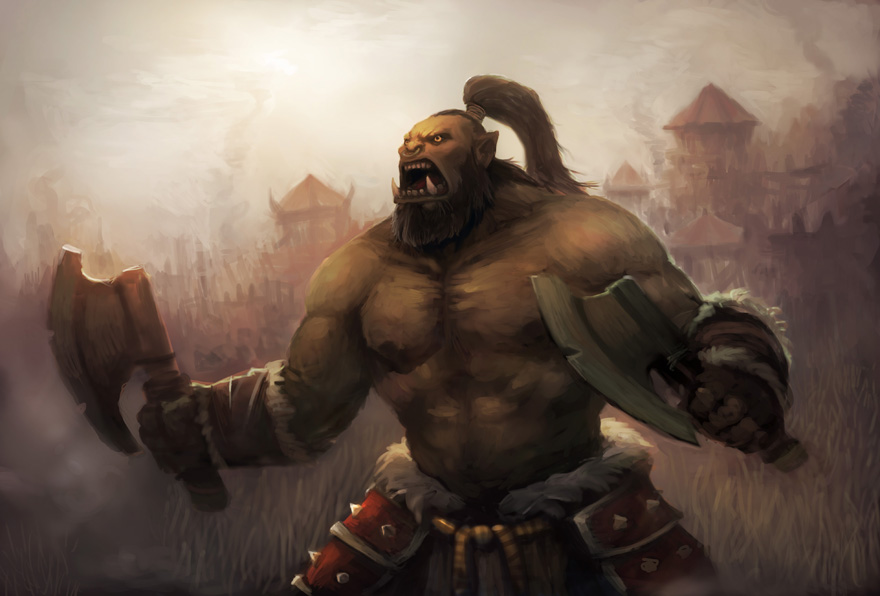Simple Mass Combat
Large-scale battles should never be fully played out with each individual unit having a full Turn. Instead, choose which units are important, likely the party of player characters and an enemy party of important NPCs. These units have Turns as normal, but they are not always in combat. Instead, treat the battlefield like a dungeoncrawl, with zones instead of rooms. Certain zones will be impassible or compromised due to the enemy's control or the clashing of ally and enemy foot soldiers, while other zones may contain battlefield events such as finding a wounded soldier or running into enemies.
"Dungeon" Turns
Continuing to treat the battlefield like a dungeon, Dungeon Turns should occur every 10 minutes. The Encounter Die should be rolled just like in a dungeon. This keeps an element of danger and randomness on the battlefield, even if they Party is trying to avoid direct combat.
Unit Strength
Standard soldiers are only worth 1 "unit" when it comes to large-scale combat. However, other creatures, effects, or mechanisms may be worth more than a single soldier is. Your GM may opt to use the examples below to add onto the relative strength of either side of large-scale combat.
- Advantageous Terrain: Worth 20 units.
- Cavalry Soldier: Worth 5 units.
- Monster, Dragon, etc.: Worth units equal to its CR.
- Siege Engine, Catapult, etc.: Worth 10 units.
- Stronghold, Defensive Walls, etc.: Worth 30 units.
Attrition Rolls and Unit Damage
Attrition Rolls are how two opposing sides of a mass combat reduce the units of one another. At the end of each Dungeon Turn, the GM rolls 1d100 for each side of the conflict. They add the total units of each side onto their respective rolls and compare the totals. The side with the higher total deals 1d20 units of Damage to the opposing side. In the case of a tie, both sides take 1d20 units of Damage. The GM determines which units are specifically affected. Generally speaking, lower value units should be removed first while higher value units, such as Monsters or Siege Engines, should go later.
Party Impact
As a mass combat wages on, the Players will likely find themselves in scuffles with opposing units. While these can be run as individual combats, the GM may also allow Players to fight at a larger scale for the sake of efficiency. For example, a combat between a 5th Level Party versus a handful of 1 CR soldiers might not be very interesting, but a combat between the same Party and a Siege Ogre might be worth fully playing out.
If playing out a combat fully, nothing really changes. The main thing to note is that if the Party defeats the opposing units, that side of the mass combat loses those units on future Attrition Rolls.
If not fully playing out a combat use the procedure below;
1. The Party automatically wins Initiative and declares/describes their Actions (i.e., "I will move up to the soldiers, use my Action to Attack, and finally use my Free Action Attack.")
2. The GM declares potential retaliatory Actions (i.e., "The soldiers will attempt their own Attack in response, if they survive.")
3. Resolve declared Actions (See Below)
4. Repeat.
To resolve declared Actions, combat is simplified. All Attacks hit automatically, bypassing the need for Attack Rolls. Instead, Damage is rolled immediately, but the total Damage dealt is divided by 5. This converts the Damage dealt directly into Unit Damage. If the Unit Damage dealt by all Players meets or exceeds the total units of the Encounter, the combat ends there. Otherwise, the opposing units will have a chance to retaliate.
If they retaliate, opposing units will Attack all Characters that Attacked them, hitting automatically. The Damage they deal is equal to their remaining value of units.
Finally, Spells use the same general rules above. Attack Roll Spells hit automatically while Spells that require a Save will always land with full effect. Spells with the power to incapacitate targets (such as Sleep or Zap) may effectively destroy a single targeted unit instantly.
Ending Mass Combats
There are a few ways large-scale battles can end. As mentioned above, it is likely that a battle will end with one side retreating. Unless this battle is the all-or-nothing last battle of a war, it is unlikely that every single unit will fight to the death. Once one side retreats, the battle ends.
Another reason to consider retreat is because of the threat of Capture. When an Attrition Roll is made, one side may attempt to capture the other side's remaining units. This can only be attempted if the targeted side has lost over half of their units, and if the Capturing side outnumbers the targeted side by double the number of units or more. If a Capture is attempted, half of the targeted side's remaining units become captured and the other half are forced to flee, ending the battle.
Finally, be it through the Encounter Die on a Dungeon Turn or by reaching a specific zone of the battlefield, facing off against the enemy party can have a great impact on the battle. If the enemy party flees or is defeated, the enemy army will retreat, ending the battle.





















